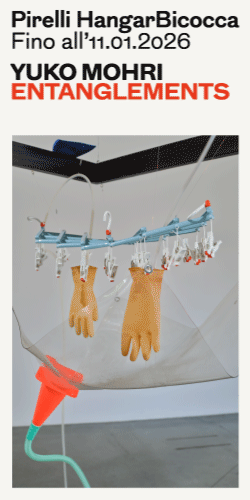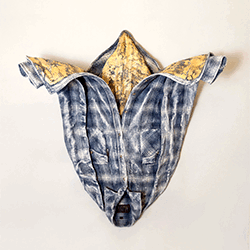[nemus_slider id=”58907″]
—
Catherine Biocca, born in 1984, she will take part in the 3rd Independent Animation Biennale in Shenzhen, China and, in spring 2017, she will have her first solo show at Frutta, in Rome and, also in spring 2017, at Kunstverein Nuernberg.
ATPdiary, in collaboration with Giulia Ponzano, asked the artist some questions
Giulia Ponzano: Your art practise is often characterised by masochistic themes: animated figures executing the most painful events, figures depicting hidden violent fantasies, sculptures crying out as their heads are chiseled by hammers and drills, etc. Thorough a human-scale version of these artworks and working with one, two, three or even four dimensions you allow the visitor to physically engage with the action. What is your aim? Are you exaggerating, destroying or reflecting our contemporary world?
Catherine Biocca: My work derives from the observation and ultimately features situations and assets of really normal and daily occurring things- human behaviour X and the possible reaction to it as counterbehaviour Y. I guess the precise cut out of such a violent and entertaining relation is what might disguise it as something as you call it masochistic at first glance. It is a reiteration of what already exists, so nothing new in the end, just arranged in a perhaps more sterile setting, like the space of an exhibition venue, so somehow displaced from its original position. The feeling of not being able to understand something triggers the lift to a great and deep full immersion- which in the beginning doesn’t seem to have much sense, but is somehow the only way to work..
It might be comparable to the act of trying to break down a specific issue: you refer to it using the simplistic exemplification “in other words..” to get a grip of what you actually see and intend to point out. Enhancing, boosting, upgrading something is always a constructive way to visually analyze it yourself and this obviously triggers also other viewers to focus on certain systemic aspects of that something. Creating a sort of viewer-surrounding animation on human scale it is possible to physically immerge the spectator in the setting and ultimately to interact with her/him on a more direct and personal level.
GP: Your work scale a lot of different media: drawing, sculpture, audio, video. What did you start with? Is there a combination you prefer?
CB: There is always this categorization-of-media-issue, yes.. I guess it is correct to say, that referring to a formal/technical way I use different elements such as drawing, video, audio etc. And mostly I start with drawings and sketches, which are then often found within my installations in form of either twodimensional, threedimensional or moving images. The inter-referring network of those bits forms a new setting in the attempt to create a real walk-through human-scale animation, so we could describe it as my clumsy way of using the formal and technical options I have to transfer an animation into a real space and creating a different environment for an authentic and physical immersion. There is no combination I prefer. It actually depends on what I need to translate a certain image into space and which components I have to put together to re-create this specific stage: we could say, that the assemblage of a specific group of elements has purely pragmatical and functional reasons.
What I often observe, not at all predominantly in the art world, is the mixture of diverse “ingredients” reflecting the desire of assembling something in order to re-stage it (and this can obviously have various different drives). If you pass by any shop window and you look at the decoration or if you consider printed as well as video commercials for instance, there is a crazy amount of diverse formal elements coming together which seems to resolve itself almost within a dull blend for our eyes, but if you dismember them in their single components it reveals a strictly functional and obvious/logical puzzle of interdependent and necessary bits. I find the natural use of this associative and assembling capacity offbeat and fascinating.

GP: JollyJoker is the project space based in Amsterdam, of which you are one of the founding members together with with Benedikt Hipp and Lisa Reitmeier. How did that collaboration first occur?
CB: We were looking for an alternative exhibition format as visual experience, in which we wanted to exhibit younger and older artistic position simultaneously in the same room, since this aspect is often blown aside by the fast dynamics and the general mechanism of the art market today.
So I guess it started with the exchange of personal observations, general considerations as well as the desire to fill a gap and to point out something that we missed in the galleries and art institutions in Amsterdam. JollyJoker is mainly a space in between, where it is possible to see and consider very human aspects of an artist in her/his different growth stages (which are totally overlooked and ignored by the art world) such as age, career, success or just daily life. This involves fundamental questions such as: How does/did today/in the past a succesful artist appear and disappear? How is the career of an artist considered in terms of longevity and duration? How are old/young artistic positions overrun by market structures? How does all this affect the professional and personal life of an artist?
JollyJokerAmsterdam simply creates the visual experience of considering parallely in one space works by two artists of different generations, which is almost never encountered in today’s artworld where the focus lies clearly on positioning single artistical practices or creating troops more than slowing down on the actual display process itself. We will continue our program in December 2016 with our next exhibition.
GP: Thinking to ‘Double C Corporate Clay’ (2016) from your last solo show ‘Unfasten Seat Belt’ at Jeanine Hofland Gallery, Amsterdam and to ‘The fear of killing/the fear of being killed’ shown at Le Foyer, Zurich: are you presenting low-fi characters, sounds and video animation to ‘protest’ against our contemporary hierarchy of images that is only based on sharpness and resolution?
CB: I guess I am out of what you call the actual protest zone, it is literally more about focusing on the image/sound/action itself rather than having it packed and incorporated into a perfect hi-end technical setting. So if you ask me why I naturally choose a more low-fi and direct formal language it is because the slickness/craftiness and high resolution standard just don’t interest me at all and it was never relevant to have this certain visually output in my work.
Mostly I work with outsourced and found footage/material or I exchange and get stuff online and the interesting aspect is exactely the result of a non-professional usage/source mix and a patchwork-like digital formation, which rather gives evidence to a direct way of communicating and addressing a certain sensation. The appealing aspect is on the contrary the raw and immediate use of animations, images and language found mostly in the online communities. There is a whole universe of social sharing online, which would be a precious implementation to our everyday life if it would be transferred into the real world: free templates, friendly exchanges of knowledge, even direct help offered by complete strangers to other complete strangers and with high time investment and no foreseen economic return at all. So, imagine going to a pizzeria and getting a pizza for free, just because you are hungry- sounds like madness and like a healthy/altruistic social behaviour..
GP: Since the 90s the political, social, economic aspects of our contemporary society have become increasingly interchangeable and hard to distinguish from one another. Networks have become places of profound confusion and dislocation – and it’s difficult for our consciousness to absorb entire worlds made of contractions, not only in language but far beyond language as well. A certain kind of contrast is present in your work as well: you are depicting the most brutal events, but your works creates a leisure-like and deeply aesthetic experience (I’m thinking specifically about your last solo show ‘Unfasten Seat Belt at JH, where a ‘cotton candy’ pink floor was attacked with knives and hypodermic syringes). How the viewer can overcome these contradictions? Do you think these can be resolved or must just be accepted?
CB: I think accepting that we are deeply connected to and somehow resposible of all kind of events linked to our life on a mere individual or even wider/global scale, let it be of political, social or economic nature, is a big part of living in today’s historical period, where time-and space-wise one thing melts into another and boundaries are more and more useless to depict and establish the beginning and the end of a certain circumstance. This makes it difficult to engage in a direct way with reality, which is why digital existence became more and more popular since the 90s creating a sort of dychotomy in how we understand our connection to others in a strictly personal but also more global way. The reslut is a bit of fuzziness when it comes to digesting the real deal, at least this is what I noticed so far. In this respect bringing up close a rather entertaining and brutal visual experience makes sense, since the gap between reality and reality is more and more unconsciously establishing a sort of confort zone around people creating an alienating way of looking at the same thing in different situations: like the slapstick mechanism of cartoons like Ren and Stimpy or Tom and Jerry, which if translated outside of the TV children’s entertaining aera makes a dubious impression.
So I think it is rather about full immersion than rational understanding or even acceptance, it is a part of everyone’s annoying behaviour that we are facing and that constantly brings us in conflict with each other or ourselves.











